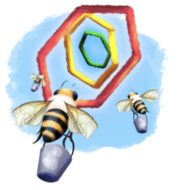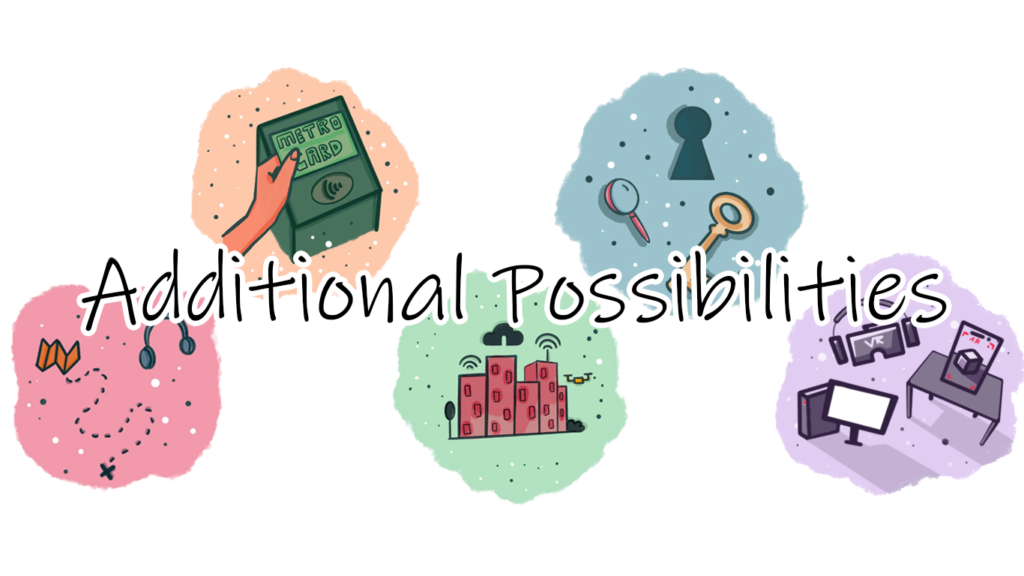Examples & Templates (Introduction)
With various funders and partners, we have launched a number of successful interactive stories and neighborhood games. An overview is below. Conceptually, hive has many capacities:

What can you make? Recent examples:
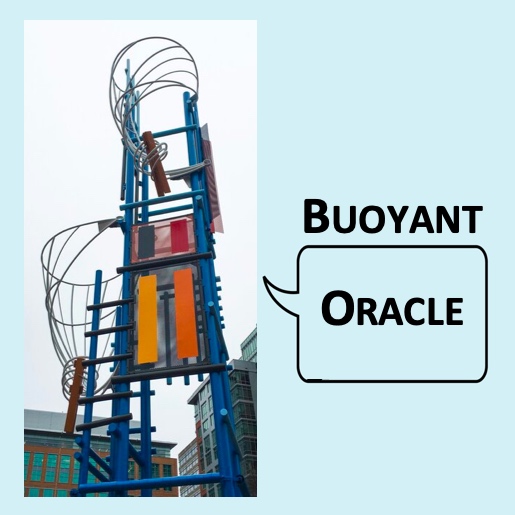
A Sculpture that Talks Back / “Buoyant Oracle”
(Five year installation for the Tephra Arts Center).
To accompany this 50-foot surrealist sculpture, we designed an “oracle” to engage with visitors by text message. The oracle sends annotated photographs (similar to polaroids), revealing the hidden history and philosophy of the artwork. More playfully, the oracle picks different “readings” of paired poetry and remixed images of the sculpture for each visitor. Featuring mounted signs with QR codes that start the text message conversation.
Created in collaboration with artist Sue Wrbican; located in Reston, VA.

Scavenger Hunt: Murals and Activist Art
(Launched in 2020 — Washington, DC).
This mural hunt was co-designed for Adams Morgan Day (the longest-running neighborhood festival in DC). Using SMS clues and photographs, we led players to iconic murals and recent activist street art as part of #BLM protests. Supported social distancing during the pandemic.
Created in collaboration with the Adams Morgan Day 2020 Planning Committee.

Listening Stations with the Smithsonian and DC Public Library
(2018-2020 — Washington, DC).
Our listening stations aimed to collect and disseminate neighborhood history in audio form. We used analog phones and repurposed payphones at neighborhood libraries and in a Smithsonian exhibition. Our installations connected these classic phones to the internet using low-cost VOIP adapters (and mobile hotspots for street use). Callers could leave recordings, conduct interviews, or hear professional oral histories. The content can be controlled by Hive Mechanic.

Postcard Trivia Map on neighborhood history with the Smithsonian and DC Public Library
(2018-2019 –– Washington, DC).
For the longest-running neighborhood festival in DC, we created a trivia system that uses a paper map as the accessible interface. We’ve found that paper maps can be excellent starting points for an experience, coupled with historic photographs that are sent to visitors’ phones. For this event, we also reached large crowds by giving out the system phone number on stage between bands as part of a raffle for neighborhood gift certificates.

Crowdmapping DC Alleys
(2020 in Washington, DC).
We joined a group of architects to reimagine the 246 miles of DC alleys. Residents from across the city contacted our system by phone (no apps required), sending in photographs that were classified through conversation rather than forms. Meanwhile, in the gallery, photographs were automatically printed as they were sent in from the streets and displayed on the wall to provide an unfolding visualization of DC alleyways.
Created in collaboration with El Studio, the DC Alley Project, and the DC Architecture Center.
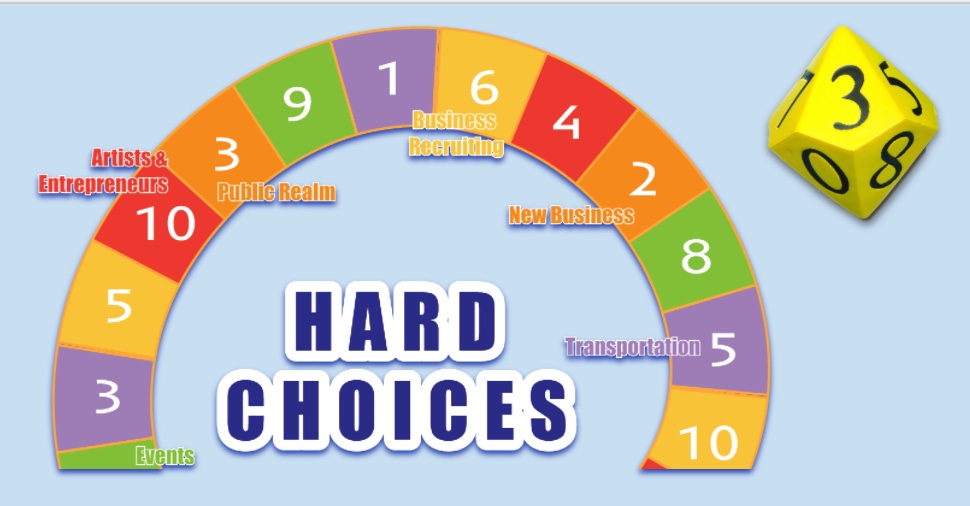
Hard Choices with the DC Office of Planning
(2021 for Penn Ave East in Washington, DC)
We created this outdoor game as a playful way to gather input on the future of a neighborhood. In the game, a charismatic “host” invites players to join at a sidewalk or public event. One player is selected to roll our ten-sided die. Their roll determines the “neighborhood futures” question that everyone will answer, displayed on a large screen or paper poster. Players can advocate for different futures, leave comments and discuss with their neighbors in person.
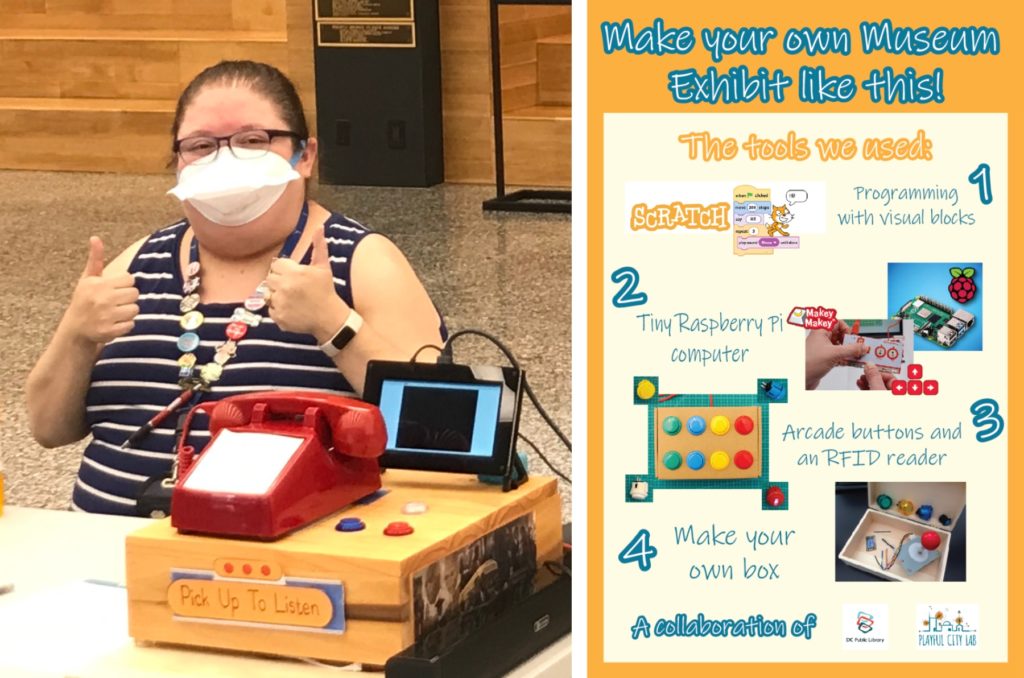
Storytelling Box and “Make-Your Own Exhibit” for the lobby of the DC Public Library
Designed to accompany an indoor mural, our physical storytelling box is an example of how to “make your own exhibit.” This storytelling box includes a listening headset, small screen for slides, and arcade buttons. Our RFID reader can recognize objects like laminated historical photos to show select content. Building your own storytelling box is ideal for makerspaces and STEM programs. The content can be controlled by Hive Mechanic, and the box itself uses a tiny computer called a Raspberry Pi that is popular among hobbyists.
• Escape room puzzles (indoor/outdoor), where each player receives a clue and everyone must come together in public space to solve it. Can involve combination locks from the local hardware store.
• Audio tours, where you can hear the authentic voices of artists and residents while navigating through public installations. You could also receive accompanying text messages and photographs on your phone while you listen.
• Use your Metro card as a game piece, where you can tap your bus card on a booth to play an audio clue.
• Respond to the weather, bus times, pollution levels, and more. Connect to live data, smart city APIs, and third-party services. For example, send messages or change the color of smart lights based on if it’s going to rain. See also our weather game description.
• Connect with AR/VR/graphical game engines (e.g., Unity). These engines can coordinate or even run Hive Mechanic games using our API. For example, players might visit a historical virtual recreation of public space from 1933 — with their choices in the game triggering videos projected on the side of a nearby community center.
…what else can you think of? The possibilities are really expansive and we can’t wait to see what new forms you will invent.
